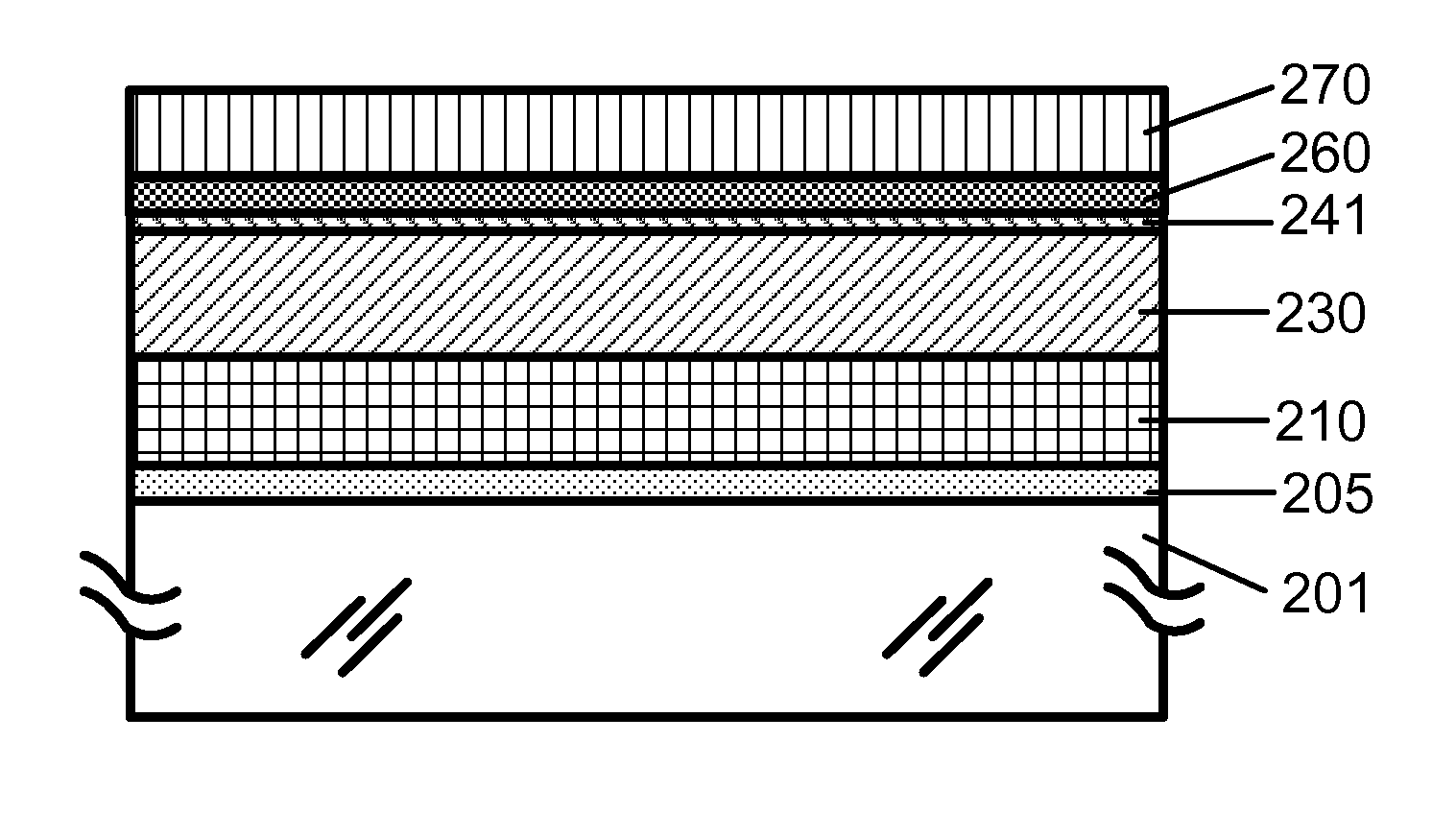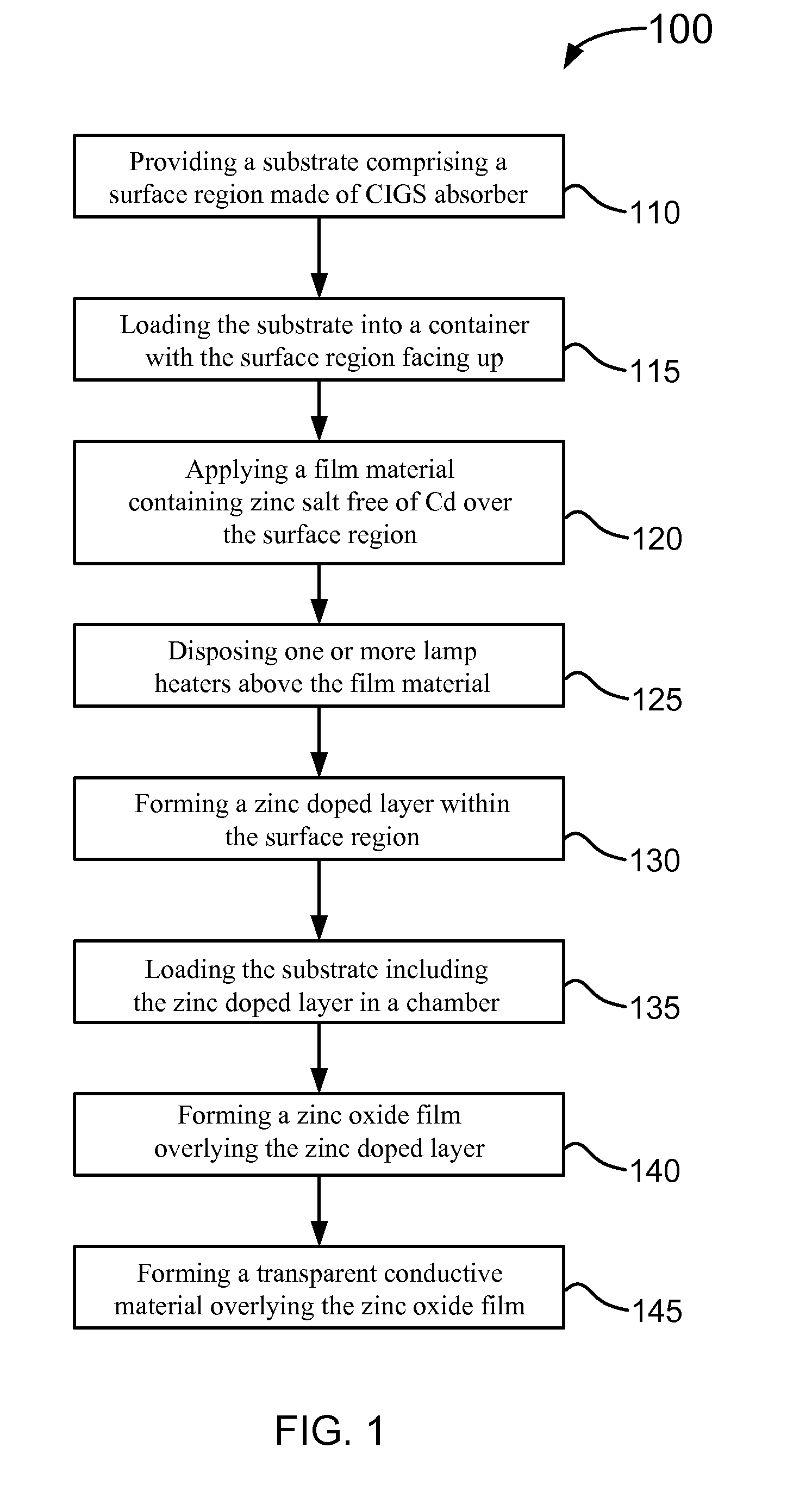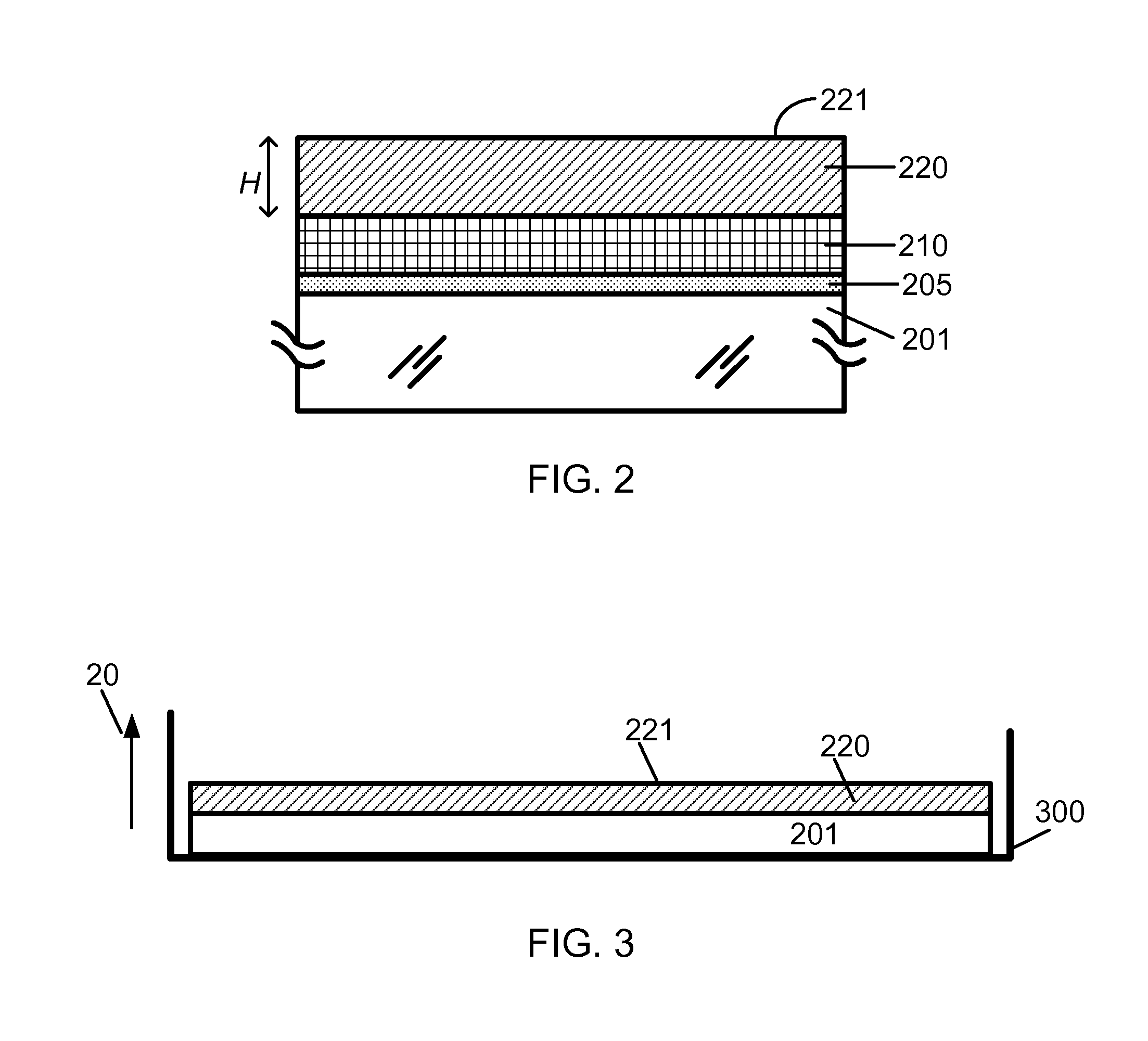Method and Device for Cadmium-Free Solar Cells
a technology of solar cells and cadmium, applied in the field of photovoltaic materials and manufacturing methods, can solve the problems of low energy conversion efficiency of devices made from such crystalline materials, many limitations remain to be resolved, and high cost of crystalline materials, so as to save processing materials, reduce environmental harm, and high photovoltaic efficiency
- Summary
- Abstract
- Description
- Claims
- Application Information
AI Technical Summary
Benefits of technology
Problems solved by technology
Method used
Image
Examples
Embodiment Construction
[0017]FIG. 1 is a process flow diagram illustrating a method of fabricating a thin film photovoltaic device. As shown, the method 100 begins with a process 110 for providing a substrate for fabricating a thin-film photovoltaic device. The resulting device is illustrated in FIG. 2. In the example, substrate 201 is a transparent material such as glass, fused silica, or quartz. In a specific embodiment, the substrate is a soda lime glass. The process 110 includes forming a barrier material 205 overlying the substrate 201. The barrier material is used as a diffusion barrier for preventing sodium and other elements in the soda lime glass substrate from diffusing into the solar cell. Barrier material 205 can be silicon oxide, silicon nitride, titanium nitride, or other material. The process 110 further includes forming a conductive material 210 overlying the barrier material 205. In an example, the conductive material 210 can be patterned across the substrate to form a plurality of cell s...
PUM
| Property | Measurement | Unit |
|---|---|---|
| distance | aaaaa | aaaaa |
| distance | aaaaa | aaaaa |
| temperature | aaaaa | aaaaa |
Abstract
Description
Claims
Application Information
 Login to View More
Login to View More - R&D
- Intellectual Property
- Life Sciences
- Materials
- Tech Scout
- Unparalleled Data Quality
- Higher Quality Content
- 60% Fewer Hallucinations
Browse by: Latest US Patents, China's latest patents, Technical Efficacy Thesaurus, Application Domain, Technology Topic, Popular Technical Reports.
© 2025 PatSnap. All rights reserved.Legal|Privacy policy|Modern Slavery Act Transparency Statement|Sitemap|About US| Contact US: help@patsnap.com



